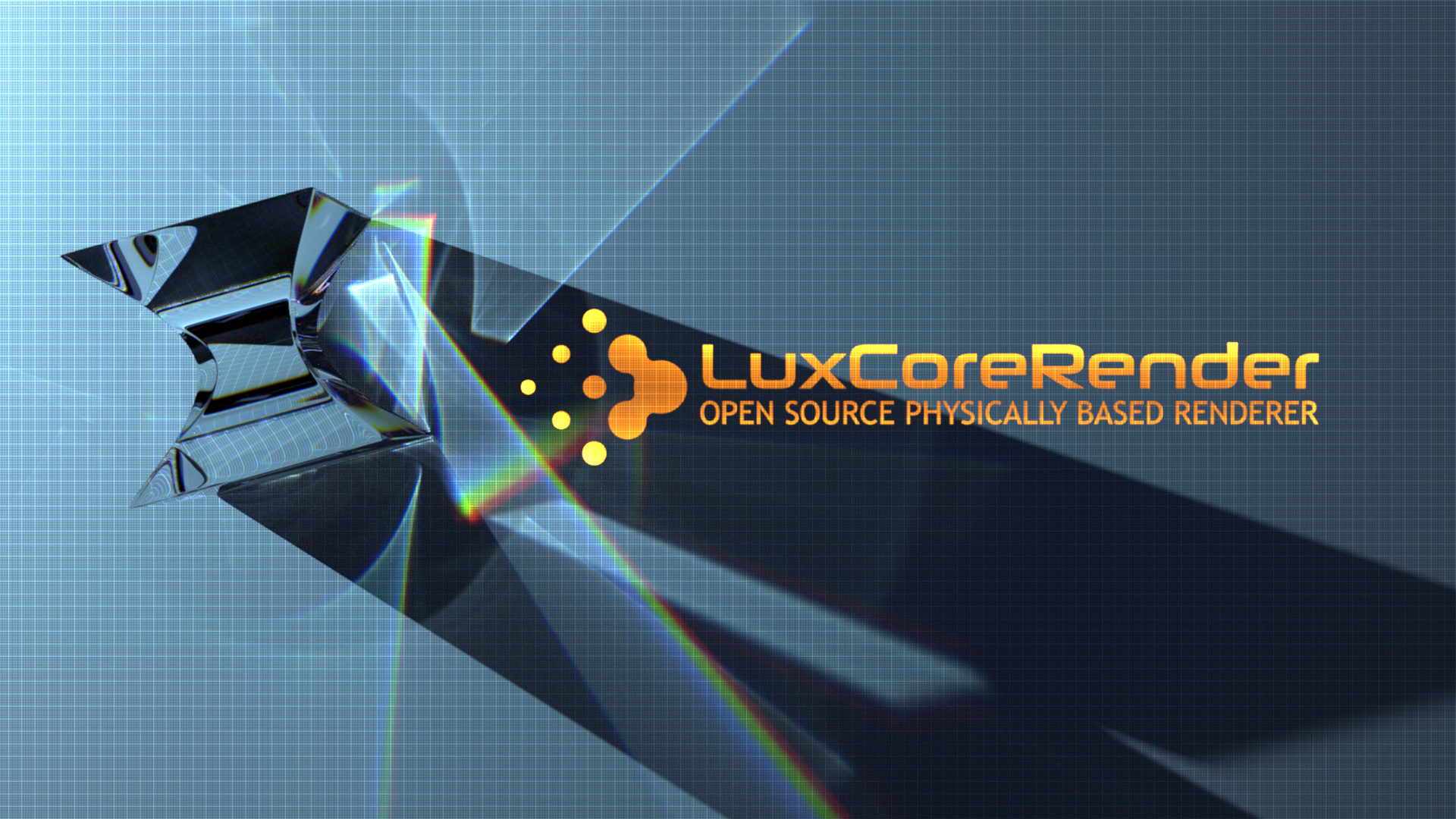LuxCoreRender

LuxCoreRender is a physically correct, unbiased rendering engine. It is built on
physically based equations that model the transportation of light. This allows
it to accurately capture a wide range of phenomena which most other rendering
programs are simply unable to reproduce.
You can find more information about at https://www.luxcorerender.org
LuxCore library
LuxCore is the new LuxCoreRender v2.x C++ and Python API. It is released under Apache Public
License v2.0 and can be freely used in open source and commercial applications.
You can find more information about the API at https://wiki.luxcorerender.org/LuxCore_API
SLG library
SLG is an implementation of LuxCore API and it can be safely ignored if you are
not interested in internal LuxCoreRender development.
LuxRays library
LuxRays is the part of LuxCoreRender dedicated to accelerate the ray intersection
process by using CPUs or GPUs.
If you don't have any specific interest in the ray/triangle intersection topic
or internal LuxCoreRender development, you can safely ignore this library.
LuxCoreUI
This is the most complete example of LuxCore API usage and it is available in
the samples/luxcoreui directory.
To check how it works, just run luxcoreui from the root directory:
./bin/luxcoreui scenes/cornell/cornell.cfg
LuxCoreConsole
This is a simple example of a command line renderer written using LuxCore API and it is
available in the samples/luxcoreconsole directory.
Just run luxcoreconsole from the root directory with:
./bin/luxcoreconsole -D batch.halttime 10 scenes/cornell/cornell.cfg
LuxCore API SDK
If you have downloaded the LuxCore API SDK, to compile the examples use:
cmake .
make
if you have downloaded the SDK without OpenCL support:
cmake -DLUXRAYS_DISABLE_OPENCL=1 .
make
PyLuxCoreTools
PyLuxCoreTools are a set of command line tools available in the LuxCoreRender stand
alone version. They includes network rendering, film merging, command line rendering
and more.
NOTE: pyluxcoretool is a stand-alone, self-containing executable on Windows. On
Linux instead, you have to install Python and PySide before to run the tools. PySide
can be usually installed with a:
sudo pip3 install PySide
(or sudo pip install PySide)
You can avoid to install PySide if you use only the command line tools available in
pyluxcoretool. You can than run pyluxcoretool with a:
python3 pyluxcoretools.zip
(or python pyluxcoretools.zip)
Authors
See AUTHORS.txt file.
Credits
A special thanks goes to:
- Alain "Chiaroscuro" Ducharme for Blender 2.5 exporter and several scenes provided;
- Sladjan "lom" Ristic for several scenes provided;
- Riku "rikb" Walve for source patches;
- David "livuxman" Rodriguez for source patches;
- Daniel "ZanQdo" Salazar (http://www.3developer.com) for Sala scene and Michael "neo2068" Klemm for SLG2 adaptation;
- Mourelas Konstantinos "Moure" (http://moure-portfolio.blogspot.com) for Room Scene;
- Diego Nehab for PLY reading/writing library;
- http://www.hdrlabs.com/sibl/archive.html and http://shtlab.blogspot.com/2009/08/hdri-panoramic-skies-for-free.html for HDR maps;
- http://chronosphere.home.comcast.net/~chronosphere/radiosity.htm for Cornell Blender scene;
- FreeImage open source image library. See http://freeimage.sourceforge.net for details (not used anymore);
- libPNG authors (http://www.libpng.org);
- zlib authors (http://www.zlib.net);
- OpenEXR authors (http://www.openexr.com);
- OpenImageIO authors (http://www.openimageio.org);
- Tomas Davidovic (http://www.davidovic.cz and http://www.smallvcm.com) for SmallVCM, an endless source of hints;
- GLFW authors (http://www.glfw.org);
- ImGUI authors (https://github.com/ocornut/imgui);
- Cycles authors (https://www.blender.org) for HSV/RGB conversion code;
- Malik Boughida and Tamy Boubekeur for "Bayesian Collaborative Denoiser for Monte-Carlo Rendering" (https://github.com/superboubek/bcd);
- OpenVDB authors (http://www.openvdb.org);
- Eigen authors (http://eigen.tuxfamily.org);
- Yangli Hector Yee, Steven Myint and Jeff Terrace for perceptualdiff (https://github.com/myint/perceptualdiff);
- Christian Pfligersdorffer for EOS portable archive (http://www.eos.info);
- Michael Labbe for Native File Dialog (https://github.com/mlabbe/nativefiledialog);
- Sven Forstmann's quadric mesh simplification code (https://github.com/sp4cerat/Fast-Quadric-Mesh-Simplification).
License
This software is released under Apache License Version 2.0 (see COPYING.txt file).